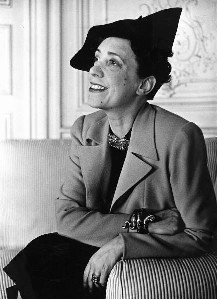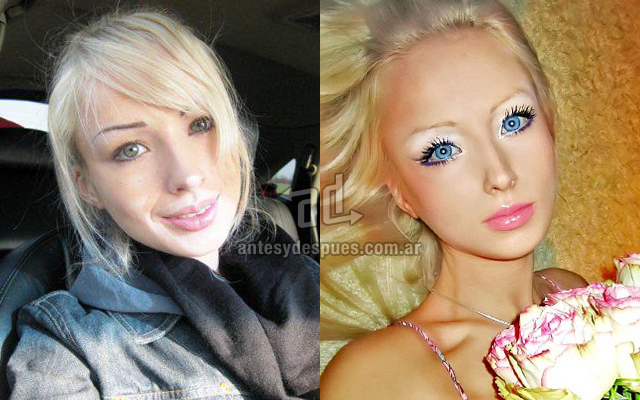As I was looking at bone and skeleton design I came across this Italian Fashion Designer who worked around the 1920's.Who designed and made an incredible garment using wadding and stitching she created the look of bones and spine in an elegant way on a dress,which is still has a very 1920s look.
Also my whole idea was to portray how women have to look,even in different generations,and the 1920s was a big change to womens fashion and how they look.It started to become more glamour,more pearls and more fascinator hats,which infact this designer made a revolution of fascinator hats by creating the "shoe hat" which was actually made in the 30's,just after the popular fascinator.
Elsa Schiaparelli (1890–1973) was an Italian fashion designer. Along with Coco Chanel, her greatest rival, she is regarded as one of the most prominent figures in fashion between the two World Wars. Starting with knitwear, Schiaparelli's designs were heavily influenced by Surrealists like her collaborators Salvador Dalí and Alberto Giacometti. Her clients included the heiress Daisy Fellowes and actress Mae West.
Schiaparelli did not adapt to the changes in fashion following World War II and her business closed in 1954.

In New York, Schiaparelli started to work with Gaby Picabia - the ex-wife of French Dadaist artist Francis Picabia,and owner of a boutique selling French fashions in New York.
Francis Picabia was born in Paris,he was a French avant-garde painter, poet and typographist. After experimenting with Impressionism and pointillism, Picabia became associated with Cubism. His highly abstract planar compositions were colourful and rich in contrasts. He was one of the early major figures of the Dada movement in the United States and in France. His was later briefly associated with Surrealism, but would soon turn his back on the art establishment.
DADAISM
Dadaism was an art movement of the European avant-garde in the early 20th century,it was an international movement,or non-movement as they say. It began in Zurich, Switzerland in 1916, spreading to Berlin shortly thereafter but the height of New York Dada was the year before, in 1915.Dada rejected reason and logic, prizing nonsense, irrationality and intuition.Noone really knew the orgin of the name Dada,some people think it is a nonsensical world although others tend to thinks its from Romanian language meaning "yes,yes".Another theory says that the name "Dada" came during a meeting of the group when a paper knife stuck into a French-German dictionary happened to point to 'dada', a French word for 'hobbyhorse'.The main influences on Dada was Abstraction,Expressionism,followed by cubism and futurism.The absurdity of Dada activities created a mirror of the absurdity in the world around them. Dada was anti-aesthetic, anti-rational and anti-idealistic. Key figures such as Marcel Duchamp disturbed the art world with his ready-mades such as
Fountain (which is simply a urinal). Dada’s challenge to conventional notions of ‘high art’ radically impacted later developments in conceptual art, performance art and post-modernism among others.
Through Gaby Picabia's work there Schiaparelli met artists like Marcel Duchamp and Man Ray. After her marriage ended, owing to her husband's unfaithfulness, she decided to follow Picabia and Man Ray to Paris.
Man Ray was an American modernist artist who spent most of his career in Paris, France. He was a significant contributor to the Dada and Surrealist movements, although his ties to each were informal. He produced major works in a variety of media but considered himself a painter above all. He was best known for his photography, and he was a renowned fashion and portrait photographer. Ray is also noted for his work with photograms, which he called "rayographs" in reference to himself.
Schiaparelli started her own business in the 1920's.
Marcel Duchamp(1887-1968) boorn in France,changed art history.Painter and mixed media artist was mainly associated with Dadaism,cubism and surrealism.His work is usually through his humour,the variety and unconventionality of its media.He shows the insight that art can be about ideas rather than worldly things.A revolution that would resonate with later generations of artists.
Art Deco in the 1920's
The mood during the 1920s,which was commonly known to be "The Roaring 20's" was a huge change in Fashion,art and society itself. World War I was over and the economy was booming throughout the world. The Roaring Twenties ushered in a spirit of frivolity, luxury and a sense of freedom and hopefulness.
Jazz music was very popular in this time,women had won the right to vote and the flapper further liberated women. Leisurely travel gained popularity when in 1923, Coco Chanel returned from a cruise to Cannes, sporting
a hot new accessory - sun tanned skin!
The Machine Age was in
full swing and technology was rapidly improving the quality of life. This was the age that introduced the radio, the
printing press, the skyscraper and modernized transportation.
There was a sense of excitement and expectancy in the air, a time of anticipating a future filled with promise. And it was during this hustle and bustle of activity that the Art Deco style began to emerge.
Paris 1925

An exhibition was held in Paris in 1925, called Exposition Internationale des Arts Decoratifs et Industriels Modernes. It attracted all of the prominent French artists, architects, craftsmen and designers of the period and featured their works. Although the various works did not all have a common aesthetic - the Art Deco style is in fact quite eclectic, with influences of Art Nouveau, Cubism, Futurism, Modernism, Neo-Classicism and Bauhaus - the themes of the works did have a commonality...
Art Deco History Themes
The themes that emerged from the Exhibition were 'Modernity', 'Technology' and 'Luxury & Leisure'. Although the Exhibition in Paris featured the works of French artists the Art Deco movement was a global one,in different countires such as Egypt, India, East Asia, Latin America, South Africa, Australia, United States, Mexico and Cuba. The 'look' of Art Deco is often difficult to describe, as it is an eclectic mix of styles, however it has the "you know it when you see it" quality about it.
Surrealism (1920's-1940's)
Surrealism is a style of modern art in which images are based on fantasy and the world of dreams. It flourished in Europe from the mid-1920's to well after the end of World War II (1939-45).
The stage was set for surrealism by an earlier movement known as dada. Dadaists were disillusioned with modern society after the outbreak of World War I in 1914. They wrote nonsense poetry and created nonsense art to express their belief that traditional values had become meaningless. Like dada, surrealism was also in conflict with social values, although the two movements differed greatly.
Salvador Dalí
Dali was a Spanish catalan surrealist painter born in Spain.He was a skilled draftsmen and is best known for his bold and bizarre images in his surrealist work.He often influences his work to Renaissance masters.Dali focused his work around film,sculpture and photography.Dalí was very imaginative, and also enjoyed indulging in unusual and grandiose behavior. His eccentric manner and attention-grabbing public actions sometimes drew more attention than his artwork.
In Paris,it was his paintings, in which he experimented with Cubism, that earned him the most attention from his fellow students. His only information on Cubist art came from magazine articles and a catalog given to him by Pichot, since there were no Cubist artists in Madrid at the time. In 1924, the still-unknown Salvador Dalí illustrated a book for the first time.
Alberto Giacometti
Giacometti was a Swiss sculptor,painter,draughtsman and printmaker.born in the village of Borgonovo near Stampa, Switzerland, son of the Post-Impressionist painter Giovanni Giacometti. Began to draw, paint and sculpt at an early age.





 An exhibition was held in Paris in 1925, called Exposition Internationale des Arts Decoratifs et Industriels Modernes. It attracted all of the prominent French artists, architects, craftsmen and designers of the period and featured their works. Although the various works did not all have a common aesthetic - the Art Deco style is in fact quite eclectic, with influences of Art Nouveau, Cubism, Futurism, Modernism, Neo-Classicism and Bauhaus - the themes of the works did have a commonality...
An exhibition was held in Paris in 1925, called Exposition Internationale des Arts Decoratifs et Industriels Modernes. It attracted all of the prominent French artists, architects, craftsmen and designers of the period and featured their works. Although the various works did not all have a common aesthetic - the Art Deco style is in fact quite eclectic, with influences of Art Nouveau, Cubism, Futurism, Modernism, Neo-Classicism and Bauhaus - the themes of the works did have a commonality...



 http://wtf.thebizzare.com/offbeat/people-and-society/anorexia-%E2%80%93-it%E2%80%99s-terrifying/
http://wtf.thebizzare.com/offbeat/people-and-society/anorexia-%E2%80%93-it%E2%80%99s-terrifying/






